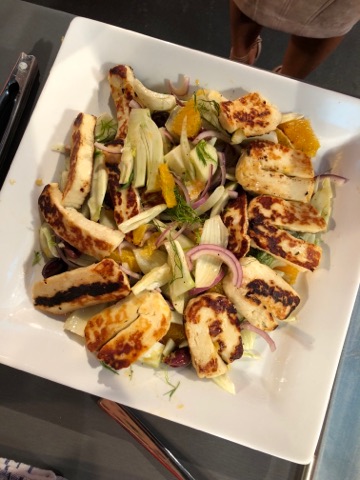
Haloúmi may máratho portókali kai elíes Kalámon
This recipe brings together some of the things Blair and I saw in the Kalamata market during filming of Taste of Greece, in a modern interpretation.
Lyndey’s Note: Originating in Cyprus, traditionally haloumi is made with sheep’s milk, but now also cows. Store in brine in an airtight container for up to two weeks. Best cooked because of its waxy texture, often served with lemon. Cypriots swear by eating fresh haloumi with wedges of watermelon for a delicious snack. A rich source of calcium, haloumi also contains potassium and zinc, and is a great low-fat option.

Keep in touch!
